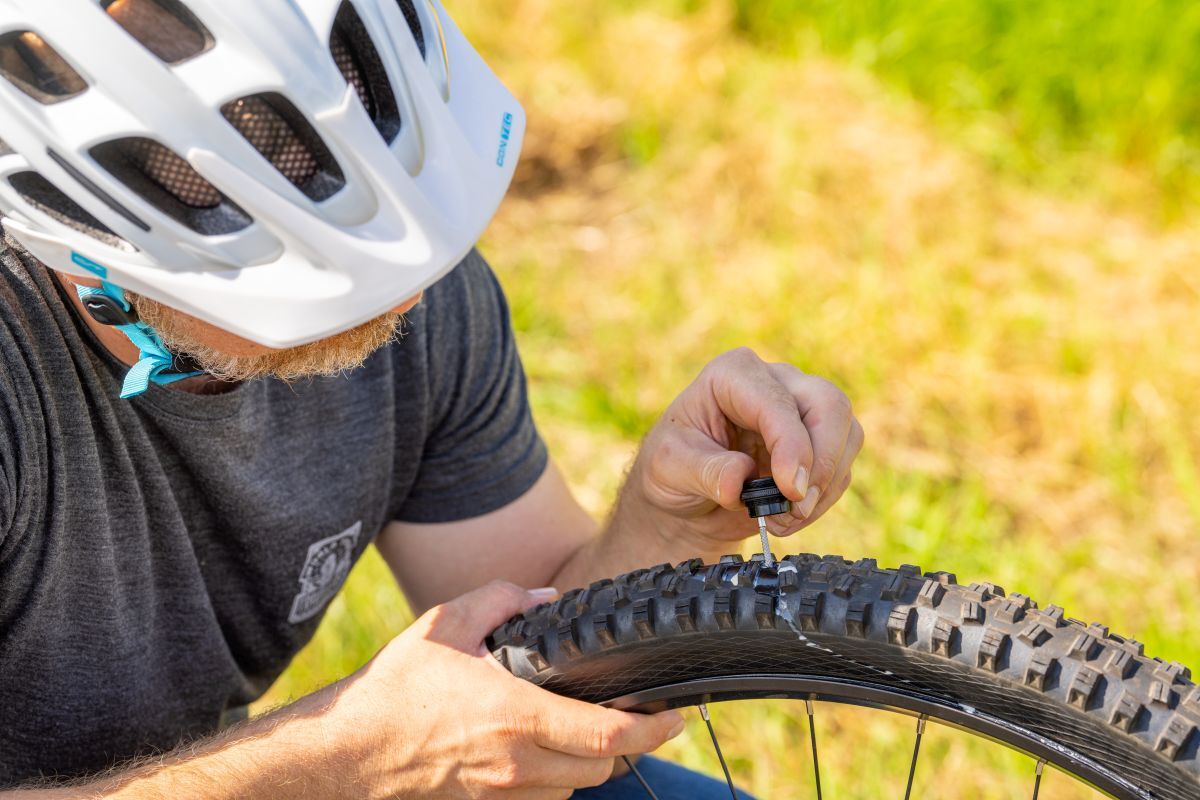Patch tubeless tires with our "Stinger TL Pro“
Tubeless tires – What is it?
A tubeless tire system is a tire without a classic tube. The tire and rim are air-tight sealed. A liquid in the tire that hardens immediately when it comes into contact with air - usually a type of latex milk - seals the smallest openings and punctures immediately.
Why use tubeless tires?
Converting to tubeless tires has many advantages and is not only useful for mountain bikers. One of the major advantages is probably the much higher puncture resistance compared to tires with a tube. Due to the sealing milk, which is constantly distributed evenly during the rotation of the tire, small holes are sealed directly. You are not only safer, but also faster on the road. Tubeless tires have namely a lower rolling resistance than the tube tires. This is due to the lack of friction between tube and tire. But there are other reasons to use tubeless tires.
Tubeless tires advantages
-
No snakebitesIn a snakebite, the tubing in a tire fold is squeezed so hard that it causes holes to appear. This is called a snakebite because the holes formed are located opposite each other and look like a snakebite.
-
Tubeless milk seals small holesSmall holes, which can be created e.g. by pointed objects, are sealed immediately. Most of the time you don't even notice these holes.
-
More grip because less air pressureWith tubeless tires you can ride with less tire pressure. This increases the contact area of the tire and improves grip.
-
Less rolling resistanceWith a tube setup, there is friction between the tube and the tire. This friction increases the rolling resistance slightly. With tubeless system you don't use a tube.

Convert to tubeless tires
You have convinced the advantages and you want to convert your bike to tubeless tires? Here we show you how to do it.
Why do tubeless tires need to be patched - don't they seal themselves?
Tubeless tires seal smaller holes directly, but if the hole is too large, the sealant no longer has a grip and simply escapes from the tire with the air. Do you have to buy a new tire now? Of course not. For such cases, there is our tubeless patch set, the "Stinger TL Pro".
Patch tubeless tires
If you notice a hole in your tire that is no longer sealed by the sealant, you can reseal your tire with our Stinger TL Pro in a few simple steps. Here we show you how it works.
Patch tires with our Stinger TL Pro
Locate the hole and position it correctly
To patch the hole, you first need to find it. Do not position the hole facing downwards. This not only makes it harder to get to the puncture, but also means that the valuable sealant will run out of the tire. And if it has completely leaked out, it will be more difficult to get the tire sealed.
Remove dirt
First, you should remove any dirt from the hole. To do this, take your Stinger TL Pro and unscrew both end caps of the aluminum housing. The cleaning tool is pointed with a roughened shaft. Simply push it into the hole, move it up and down a few times and pull it out again.
Fill hole with rubber strips
Now take a "Rubber Strip", this is the rubber "worms" that are enclosed in different thicknesses. Which one you choose depends on the size of the hole. In our case, a thin rubber strip is enough. Take the strip and place it centrally between the two prongs of the insertion tool. Now insert the fork with the rubber strip into the hole and pull the insertion tool out again. You can cut off the protruding material of the rubber strips with an overhang of 3-4 mm.




Sealing with tubeless milk
Finally, rotate the tire a little. This allows the sealant to spread and seal the gaps again. And you're ready to go. With a little practice, the whole repair will only take a few minutes, if at all.


Conclusion
Tubeless tires are a whole lug length ahead of their classic colleagues in everyday life and also when patching. It goes faster and is associated with less assembly effort than repairing a tube. With our instructions linked in the text, the conversion is also no problem. So do not be afraid of tubeless but just try it out.
The YouTube video was blocked due to your cookie settings.






